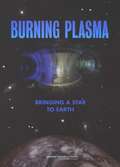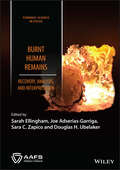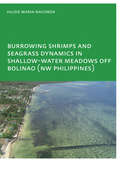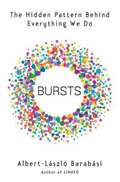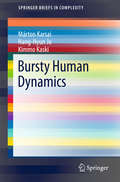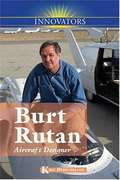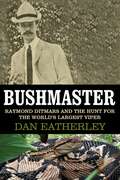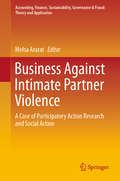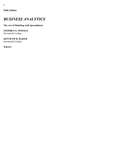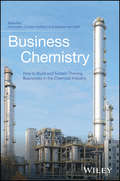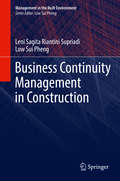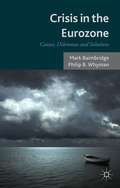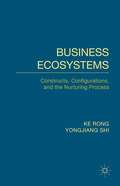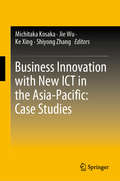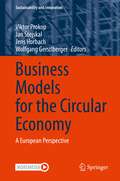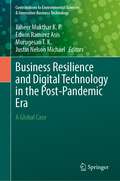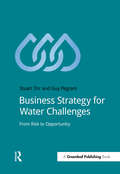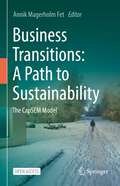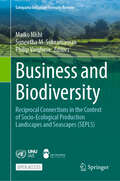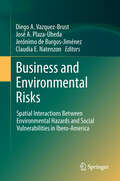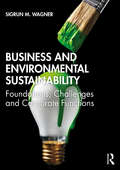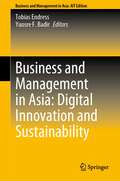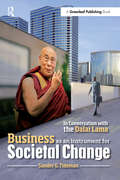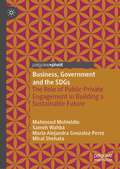- Table View
- List View
Burning Plasma: Bringing A Star To Earth
by Burning Plasma Assessment CommitteeSignificant advances have been made in fusion science, and a point has been reached when we need to decide if the United States is ready to begin a burning plasma experiment. A burning plasma—in which at least 50 percent of the energy to drive the fusion reaction is generated internally—is an essential step to reach the goal of fusion power generation. The Burning Plasma Assessment Committee was formed to provide advice on this decision. The committee concluded that there is high confidence in the readiness to proceed with the burning plasma step. The International Thermonuclear Experimental Reactor (ITER), with the United States as a significant partner, was the best choice. Once a commitment to ITER is made, fulfilling it should become the highest priority of the U.S. fusion research program. A funding trajectory is required that both captures the benefits of joining ITER and retains a strong scientific focus on the long-range goals of the program. Addition of the ITER project will require that the content, scope, and level of U.S. fusion activity be defined by program balancing through a priority-setting process initiated by the Office of Fusion Energy Science.
Burnt Human Remains: Recovery, Analysis, and Interpretation (Forensic Science in Focus)
by Douglas H. Ubelaker Sara C. Zapico Joe Adserias-Garriga Sarah EllinghamBURNT HUMAN REMAINS An all-encompassing reference and guide designed for professionals involved in the forensic analysis of burnt remains Burnt Human Remains: Recovery, Analysis and Interpretation presents an in-depth multidisciplinary approach to the detection, recovery, analysis, and identification of thermally altered remains. Bridging the gap between research and practice, this invaluable one-stop reference provides detailed coverage of analytical techniques in forensic medicine and pathology, forensic anthropology, forensic odontology, and forensic chemistry and forensic biology. Contributions from a panel of expert authors review the newest findings in forensics research and discuss their applicability to forensic case work. Opening with a historical overview of the discipline, the book covers the search and recovery aspects of burnt human remains, medico-legal investigations, determination of the post mortem interval of burnt remains, structural changes of burnt bone and teeth, DNA extraction from burnt remains, and much more. Throughout the text, the authors emphasize the importance of understanding the changes undergone by bodies when subjected to fire for establishing identity, reconstructing the events leading up to incineration, and determining the cause and manner of death. Provides a systemic framework that integrates established forensic methods and state-of-the-art analytical approaches Describes different forensic analyses from the macroscopical, microscopical, biochemical, and molecular level Features international case studies of challenging individual cases as well as natural or man-made mass fatalities requiring the identification of incinerated remains Demonstrates how changes to the macro- and microstructure of burnt remains can reveal information about incineration conditions Discusses organizations and programs focused on developing standards and best practice for the recovery and analysis burnt remains Burnt Human Remains: Recovery, Analysis and Interpretation is an indispensable resource for all practitioners engaged in the interpretation of burned human tissue, including pathologists, forensic chemists, forensic biologists, forensic anthropologists, forensic odontologists, and archaeologists.
Burp!: The Most Interesting Book You'll Ever Read about Eating (Mysterious You)
by Diane Swanson Rose Cowles<p>The unique Mysterious You series explores the mysteries of the human body using an exciting mix of thoroughly researched information, amazing anecdotes and surprising try-it activities. <p>In Burp!, kids discover all kinds of fascinating facts about food and eating, such as what food is made of, how your body breaks it down, why you have cravings, how sight and smell affect what you taste and lots more.</p>
Burrowing Shrimps and Seagrass Dynamics in Shallow-Water Meadows off Bolinao (New Philippines): UNESCO-IHE PhD
by Hildie Maria NacordaBased on research in Bolinao, this book assesses the importance of small-scale disturbance by burrowing shrimps. It covers the distribution of burrowing shrimp disturbance, the behavior of the snapping shrimp Alpheus macellarius in situ and as observed from tank experiments, and the effects of short-term burial and leaf clipping on the growth patte
Bursts: The Hidden Patterns Behind Everything We Do, from Your E-mail to Bloody Crusades
by Albert-Laszlo BarabasiA revolutionary new theory showing how we can predict human behavior-from a radical genius and bestselling author Can we scientifically predict our future? Scientists and pseudo scientists have been pursuing this mystery for hundreds and perhaps thousands of years. But now, astonishing new research is revealing patterns in human behavior previously thought to be purely random. Precise, orderly, predictable patterns... Albert Laszlo Barabasi, already the world's preeminent researcher on the science of networks, describes his work on this profound mystery in Bursts, a stunningly original investigation into human nature. His approach relies on the digital reality of our world, from mobile phones to the Internet and email, because it has turned society into a huge research laboratory. All those electronic trails of time stamped texts, voicemails, and internet searches add up to a previously unavailable massive data set of statistics that track our movements, our decisions, our lives. Analysis of these trails is offering deep insights into the rhythm of how we do everything. His finding? We work and fight and play in short flourishes of activity followed by next to nothing. The pattern isn't random, it's "bursty." Randomness does not rule our lives in the way scientists have assumed up until now. Illustrating this revolutionary science, Barabasi artfully weaves together the story of a 16th century burst of human activity-a bloody medieval crusade launched in his homeland, Transylvania-with the modern tale of a contemporary artist hunted by the FBI through our post 9/11 surveillance society. These narratives illustrate how predicting human behavior has long been the obsession, sometimes the duty, of those in power. Barabási's astonishingly wide range of examples from seemingly unrelated areas include how dollar bills move around the U.S., the pattern everyone follows in writing email, the spread of epidemics, and even the flight patterns of albatross. In all these phenomena a virtually identical, mathematically described bursty pattern emerges. Bursts reveals what this amazing new research is showing us about where individual spontaneity ends and predictability in human behavior begins. The way you think about your own potential to do something truly extraordinary will never be the same.
Bursty Human Dynamics (SpringerBriefs in Complexity)
by Márton Karsai Hang-Hyun Jo Kimmo KaskiThis book provides a comprehensive overview on emergent bursty patterns in the dynamics of human behaviour. It presents common and alternative understanding of the investigated phenomena, and points out open questions worthy of further investigations. The book is structured as follows. In the introduction the authors discuss the motivation of the field, describe bursty phenomena in case of human behaviour, and relate it to other disciplines. The second chapter addresses the measures commonly used to characterise heterogeneous signals, bursty human dynamics, temporal paths, and correlated behaviour. These definitions are first introduced to set the basis for the discussion of the third chapter about the observations of bursty human patterns in the dynamics of individuals, dyadic interactions, and collective behaviour. The subsequent fourth chapter discusses the models of bursty human dynamics. Various mechanisms have been proposed about the source of the heterogeneities in human dynamics, which leads to the introduction of conceptually different modelling approaches. The authors address all of these perspectives objectively, highlight their strengths and shortcomings, and mention possible extensions to them. The fifth chapter addresses the effect of individual heterogeneous behaviour on collective dynamics. This question in particular has been investigated in various systems including spreading phenomena, random walks, and opinion formation dynamics. Here the main issues are whether burstiness speeds up or slows down the co-evolving processes, and how burstiness modifies time-dependent paths in the system that determine the spreading patterns of any kind of information or influence. Finally in the sixth chapter the authors end the review with a discussion and future perspectives. It is an ideal book for researchers and students who wish to enter the field of bursty human dynamics or want to expand their knowledge on such phenomena.
Burt Rutan: Aircraft Designer (Innovators)
by Kris HirschmannA short fact-filled biography of Burt Rutan, an aviation designer known for dreaming up unusual aircraft designs and then building them. Rutan single-handedly changed the field of aviation design, and in 2004 won a ten million dollar contest for successfully designing, building and flying the first working private spaceship.
Bushmaster: Raymond Ditmars and the Hunt for the World's Largest Viper
by Dan EatherleyThe amazing story of one man’s obsession with an enigmatic and deadly reptile. Raymond Ditmars (1876-1942), the first curator of reptiles at New York’s famous Bronx Zoo, brought cold-blooded animals to public attention as never before. Through wildly successful books and movies, he inspired a generation of zoologists with his fascination for snakes, insects, and other misunderstood creatures. Ditmars was among the most celebrated naturalists in America. His reptile-collecting trips for the zoo spawned newspaper headlines across the world. Although a serpent lover, he was all too aware of the devastating effects of snakebites and was instrumental in the development of antivenom. His films and writings brought him fame, but he remained a devoted zoo employee, doing what he loved most: caring for animals. Bushmaster tells the story of this remarkable man and what became an obsession with the mysterious bushmaster of the South American rainforest. Measuring up to thirteen feet in length, this is the world’s largest viper, and its scientific name, Lachesis muta, translates as "silent fate. ” Despite numerous expeditions to jungles from Honduras to Brazil, Ditmars could never capture a bushmaster for himself. Now, British author Dan Eatherley follows in Ditmars’s footsteps, revisiting his early haunts in the United States and South America. He attempts to do what Ditmars himself failed to achieve: to find a bushmaster in the wild. But eighty years later, will Dan have any more luck? Through the author’s own quest, Bushmaster reveals the life of a pioneer herpetologist, wildlife filmmaker, and zoo curator.
Business Against Intimate Partner Violence: A Case of Participatory Action Research and Social Action (Accounting, Finance, Sustainability, Governance & Fraud: Theory and Application)
by Melsa AraratThis book addresses the Business Against Domestic Violence (BADV) project launched by the Corporate Governance Forum of Turkey (CGFT), a research center at Sabanci University School of Management. The goal of BADV is to mobilize companies to combat intimate partner violence (IPV) in Turkey. The project was made possible by a collaborative partnership with the United Nations Population Fund (UNFPA) and the Turkish Industrialists and Business Association (TUSIAD). The book is divided into two sections. Section 1, which focuses on the project itself, frames the elimination of IPV as an SDG target, and provides a detailed account of the project’s motivation, underlying research, project organization, implementation, and outcome. The question of why gender equality and IPV matter for business is also addressed. Lastly, the role of business schools and management scholars in creating practical and actionable knowledge to achieve development goals is discussed, based on the BADV experience. In turn, Section 2 explores the background of the project and sheds a multidisciplinary light on the local context. The main objective of the book is to encourage business schools and business organizations to form partnerships in pursuit of Goal-5 and other SDG targets, helping to create actionable knowledge and prompt social action. The book presents IPV from all relevant perspectives and focuses on Turkey, a key emerging economy and G-20 country.
Business Analytics: The Art of Modeling with Spreadsheets
by Kenneth R. Baker Stephen G. PowellNow in its fifth edition, Powell and Bakers Business Analytics: The Art of Modeling with Spreadsheets provides students and business analysts with the technical knowledge and skill needed to develop real expertise in business modeling. In this book, the authors cover spreadsheet engineering, management science, and the modeling craft. The briefness & accessibility of this title offers opportunities to integrate other materials -such as cases -into the course. It can be used in any number of courses or departments where modeling is a key skill.
Business Chemistry: How to Build and Sustain Thriving Businesses in the Chemical Industry
by Jens Leker Carsten Gelhard Stephan Von DelftBusiness Chemistry: How to Build and Sustain Thriving Businesses in the Chemical Industry is a concise text aimed at chemists, other natural scientists, and engineers who want to develop essential management skills. Written in an accessible style with the needs of managers in mind, this book provides an introduction to essential management theory, models, and practical tools relevant to the chemical industry and associated branches such as pharmaceuticals and consumer goods. Drawing on first-hand management experience and in-depth research projects, the authors of this book outline the key topics to build and sustain businesses in the chemical industry. The book addresses important topics such as strategy and new business development, describes global trends that shape chemical companies, and looks at recent issues such as business model innovation.
Business Continuity Management in Construction (Management in the Built Environment)
by Low Sui Pheng Leni Sagita Riantini SupriadiThis book provides an understanding of Business Continuity Management (BCM) implementation for local/international construction operations, with a primary focus on Indonesian construction firms as an illustrative example. It reviews the whole spectrum of work relating to organizational culture (OC) and the institutional framework (IF) as one of the key ways for companies to evaluate and implement BCM in construction operations. Once readers have acquired a sound understanding of BCM, OC and IF linkages in construction firms, the lessons learned can be extended to other companies. This is facilitated through a systematic assessment framework presented in the book using a Knowledge Based Decision Support System (BCM-KBDSS), which allows these companies to evaluate their current status quo with respect to BCM, OC and IF, and then make informed decisions on how and to what extent BCM should be implemented in their operations. As such, the book offers a unique blend of theory and practice, ensuring readers gain a far better understanding of BCM implementation in the construction industry.
Business Ecosystems
by Ke Rong Yongjiang ShiThe book examines business ecosystems in an emerging industry context whilst exploring four essential areas of business ecosystems: the business ecosystems' key constructive elements, their typical patterns of the element configurations, the five phase process of their life cycle, and the nurturing strategies and processes from a firm perspective.
Business Ecosystems
by Ke Rong Yongjiang ShiThe book examines business ecosystems in an emerging industry context whilst exploring four essential areas of business ecosystems: the business ecosystems' key constructive elements, their typical patterns of the element configurations, the five phase process of their life cycle, and the nurturing strategies and processes from a firm perspective.
Business Innovation with New ICT in the Asia-Pacific: Case Studies
by Ke Xing Shiyong Zhang Jie Wu Michitaka KosakaThis book clarifies the direction of business innovation using new ICT such as the Internet of things (IoT), artificial intelligence (AI), smartphones, and cloud computing through a series of case studies on successful trials and advanced businesses in the Asia-Pacific where many industry sectors have been growing successfully in the 21st century. ICT has been playing an important role in value creation for customers and in profit generation for providers, contributing to various service innovation and business innovation. Now, digitalization using IoT and AI provides solutions to address various issues in the human society, which is transforming services and businesses in the 21st century. “What is the direction of the business innovation using new ICT?” is a highly concerned question for business researchers and practitioners. Aiming to answer the question, this book conducts a number of cases studies in the Asia-Pacific region, including the Mainland China, Taiwan, Japan, Malaysia, Vietnam, as well as Australia. Among the studies, there are 4 cases from ICT providers, 4 cases from traditional and services, and 6 cases from new ICT applications and businesses. Each case analyzes social needs and human desires, new value created, roles of new technologies, processes and difficulties in developing new businesses, the relationship among customers, providers, and stakeholders, value chain co-creation and optimization, factors of success, and business models. Finally, the direction of business innovation with new ICT in the Asia-Pacific is suggested by summarizing the findings from the case studies through the lens of the theoretical analysis in service science.
Business Models for the Circular Economy: A European Perspective (Sustainability and Innovation)
by Jan Stejskal Jens Horbach Wolfgang Gerstlberger Viktor ProkopIncreased ecological awareness and the growing scarcity of resources have led to the introduction of new environmental standards, triggering enterprises, regions, and even countries to adopt new business models and industrial reconversion approaches. However, despite increased interest in business models and their innovation, it still lacks the integration of circularity and sustainability and to date research on these areas is still limited. This book, therefore, provides readers with a closer picture of the issues of business models and their innovation for the circular economy in Europe, where the issues of sustainability and the shift towards the circular economy have become cornerstones of European policies and documents and where significant differences have been identified between firms and countries. This book provides a unique view of different European perspectives and enables the reader to compare the situation in countries with completely different historical and economic conditions as well as with different perceptions of the need for the actions leading to the sustainable development and to the shift towards the circular economy.
Business Resilience and Digital Technology in the Post-Pandemic Era: A Global Case (Contributions to Environmental Sciences & Innovative Business Technology)
by Edwin Ramirez Asis Jaheer Mukthar K.P. Murugesan T. K. Justin Nelson MichaelThis book throws a light on sustainable perspectives of how business entities experienced the turbulent environment in the light of pandemic. The post-pandemic era is characterized by the radical and dramatic changes in the business model, corporate strategies and digital technology. This book provides the academicians, research scholars and corporate professionals with a thought-provoking forum to discuss and deliberate the major trends, opportunities and issues of business entity from the outlook of business resilience, corporate strategy and digital technology in the light of post-pandemic era. The book also suggests suitable measures and strategies for the sustainable development of business entities.
Business Strategy for Water Challenges: From Risk to Opportunity (Doshorts Ser.)
by Stuart Orr Guy PegramWater is a resource under increased stress, with its management now cited as one of the greatest risks to business continuity and growth. This concise guide for professionals offers strategic steps for developing a corporate water stewardship strategy. It will enable you to: define business water risks, and the opportunities associated with those risks; explore, through sector-specific profiles, risks associated with regulation, reputation, external response and engagement, and physical incidents; develop a clear plan and process for creating, managing and mainstreaming a corporate water strategy; identify several initiatives and new risk tools that your company can use to stay on top of best practice in water management. With the advent of risk tools, and a growing list of testaments around business risk from water, we are now able to respond more appropriately to how this resource is impacted by and impacts upon business. Use this book as your guide as you begin to build your company's strategy around water.
Business Transitions: The CapSEM Model
by Annik Magerholm FetThis open access book represents a journey documenting the development of tools and methodologies over 3 decades and asks where the future lies. It further develops seminal work carried out under the auspices of the Capacity building in Sustainability and Environmental Management (CapSEM) project co-funded by the EU Erasmus programme from 2016-2019 as well as research projects such as IGLO-MP2020, SUSPRO, and SISVI. It gathers existing paradigms of environmental management within the relevant frameworks which have driven the way in which this discipline has developed. It seeks to both challenge and support the way in which business sectors have approached this previously, with a more holistic and overarching model being provided, moving through four very distinct levels. It therefore provides not only a different approach, but a different way of thinking. Systems thinking is characterized by four levels: Process, Product Value Chain, Organisational and Systemic which combines Material Flow Analysis (MFA), Life Cycle Assessment (LCA), Corporate Social Responsibility (CSR) and Industrial Ecology (IE) principles. In its practical application, Corporate Social Responsibility, for example, thus becomes an integral part of a much wider business strategy and impacts on all business activity, not added value for its own sake, but a valuable component in a wider toolbox as a fundamental part of any business strategy and plan, changing, flexing and developing over the years. The book is divided into 4 parts: moving from context and background, to the theoretical model or toolbox, onto its practical application in case studies and culminates in looking at the future and potential developments. It represents the multi-disciplined collaboration at NTNU and beyond, exemplifying its use in a wealth of business sectors and a range of stakeholders from construction to textiles to wind power as outlined in the European Circular Action Plan.
Business and Biodiversity: Reciprocal Connections in the Context of Socio-Ecological Production Landscapes and Seascapes (SEPLS) (Satoyama Initiative Thematic Review)
by Maiko Nishi Suneetha M. Subramanian Philip VargheseThis open access book presents useful knowledge and lessons that derive from on-the-ground activities and contributes to policy recommendations, focusing on the reciprocal connections between business and biodiversity in the context of social-ecological production landscapes and seascapes (SEPLS). It introduces a set of concrete examples demonstrating the relevance of SEPLS to aspects of reciprocal connections between business and biodiversity. The case studies highlight the roles, attitudes, motivations, and actions of multiple stakeholders in conserving biodiversity while providing other benefits that directly or indirectly contribute to businesses. They also illustrate on-the-ground impacts of businesses in SEPLS – including positive and negative ones, providing insights on how to categorize and measure the impacts and dependency of businesses on biodiversity and nature’s contributions to people. This will help facilitate policy learning and evidence-based decision-making to promote the achievement of global goals including the Kunming-Montreal Global Biodiversity Framework and the sustainable development goals (SDGs). Many of the case studies concerning SEPLS management derived from the International Partnership for the Satoyama Initiative (IPSI) provide rich evidence to detail and help clarify the interdependency between businesses and biodiversity while exemplifying innovative solutions to facilitate more sustainable business decisions and actions for socially and ecologically sound outcomes. Furthermore, the experiences in managing SEPLS where multiple actors negotiate and collaborate to meet diverse needs and interests provide practical insights on the roles and responsibilities of stakeholders and how to build partnerships to promote systemic changes towards sustainable futures. The book provides key messages derived from a synthesis of the case study findings, which will help stakeholders including policymakers, scientists, and practitioners to deepen the understanding of reciprocal connections between business and biodiversity and clarify challenges and opportunities for promoting more sustainable businesses and at the same time safeguarding biodiversity and ecosystems. This in turn will help further the science-policy-practice interfaces related to biodiversity, ecosystem services, and sustainable development.
Business and Environmental Risks: Spatial Interactions Between Environmental Hazards and Social Vulnerabilities in Ibero-America
by Diego A. Vazquez-Brust Claudia E. Natenzon Jerónimo de Burgos-Jiménez José A. Plaza-ÚbedaBased on detailed research funded across two continents and involving universities in Argentina, Spain and the UK, this book sets out an innovative, multidisciplinary approach to assessing both environmental and social risks in a given territorial area. Using data from a number of Ibero-American nations, the study combines environmental, socio-economic and geographic factors to construct a set of spatial and technical indicators that measure the social vulnerability and industrial hazardousness of a defined area. Aggregating these indicators in a geographic information system (GIS) allows researchers to assess the potential risk to which a certain area and its population are subject as a result of the environmental deterioration caused by co-located industrial activity.
Business and Environmental Sustainability: Foundations, Challenges and Corporate Functions
by Sigrun M. WagnerEnvironmental sustainability is increasingly important to organisations, whether for regulatory, financial or ethical reasons. Business and Environmental Sustainability looks at the environmental aspect of sustainability for all organisations pursuing competitive advantage. The book provides theoretical foundations from science, economics, policy and strategy, introduces three environmental challenges (climate change, pollution and waste) and looks at how corporate functions can address these. This textbook provides a thorough foundation by introducing readers to the science, reasoning and theory behind environmental sustainability and then delves into how these ideas translate into principles and business models for organisations to use. Next, it covers environmental challenges from climate change, pollution and waste, and then goes on to examine the different corporate functions (from supply chain management to human resources) to illustrate how environmental sustainability is managed and put into practice in organisations. Finally, a set of integrative case studies draws everything together and enables the reader to apply various analytical tools, with the aim of understanding how companies can not only reduce their environmental footprint but can positively contribute to environmental sustainability. Written by an award-winning lecturer, Business and Environmental Sustainability boasts a wealth of pedagogical features, including examples from a range of industries and countries, plus a companion website with slides, quiz questions and instructor material. This will be a valuable text for students of business, management and environmental sustainability and will also be suitable for broader courses on corporate responsibility and sustainability across environmental studies, political science and engineering.
Business and Management in Asia: Digital Innovation and Sustainability
by Tobias Endress Yuosre F. BadirThis book focuses on digital innovation and sustainability in the Asian region in the context of business and management. Managers and policy makers rely on digital technologies to face the region’s sustainability challenges and solve sustainability problems. From business perspective, sustainability is defined as the adoption of business strategies, activities, and operations that meet the needs of the firm and its stakeholder today while protecting, sustaining, and enhancing the human and natural resources that will be needed in the future. Digital innovation refers to the application of digital technologies to existing business problems as well as the development of the firm’s strategy, culture, and human resources talent to deal and use digital technologies to solve sustainability issues. There is a consensus among scholars and practitioners that organizations need digital innovation to stay competitive. Businesses that are digital innovators consider new ways to solve old and new sustainability problems facing the Asian region. This book, with its practical examples, gives the reader impulses for new Asian’s approaches and encourages the readers to dare to think and act in new ways. This book is the first annual compilation of innovative ideas and valuable managerial solutions produced by the region’s managers and decision-makers who think and act creatively, helmed by Tobias Endress and Yuosre F. Badir from the School of Management at the Asian Institute of Technology.
Business as an Instrument for Societal Change: In Conversation with the Dalai Lama
by Sander TidemanBusiness as an Instrument for Societal Change: In Conversation with the Dalai Lama is the result of two decades of research and dialogue with His Holiness the Dalai Lama and other leaders in business, government, science and education. Author Sander Tideman, a lawyer and banker who has maintained a friendship with the Dalai Lama over all these years, presents a practical framework and methodology to develop a new kind of leadership - one fit to repurpose the business world and tackle escalating social, economic and environmental needs. The Dalai Lama rarely speaks directly on the topics of business, leadership and economics. Yet in the dialogues recounted here, his wisdom - combined with key insights from business and public leaders -creates a unified shift towards a consciousness of interconnectedness, offering profound insights for practitioners and general readers alike. Tideman unites the scientific worldviews of physics, neuroscience and economics with the positive psychology of human relationships, and ancient spiritual wisdom, to formulate practical business leadership solutions. While recognizing the need for change in external structures and governance, Tideman highlights the importance of opening our minds, and connecting inner and outer spirituality. At the same time, he focuses on concrete practices for winning the hearts and minds of employees, customers, communities, and society at large, while addressing deep-rooted problems such as extreme social inequality and continued financial collapses. At the heart of this book lies the journey to discover our shared purpose. This ignites new sources of value creation for the organisation, customers and society, which Tideman terms 'triple value'. We can achieve triple value by aligning societal and business needs, based on the fundamental reality of interconnection. Business as an Instrument for Societal Change: In Conversation with the Dalai Lama is a readable and intelligent exploration of how leaders can actually help to shape a sustainable global economy by embracing innate human and humane behaviour. It is also Tideman's fascinating personal journey, which brought him to question the underlying motivations and goals of business leadership and to seek a new paradigm for a more sustainable approach. Reflecting Tideman's sharp perceptions and infused with the Dalai Lama's unmistakable joy, this book has the power to change your way of thinking.
Business, Government and the SDGs: The Role of Public-Private Engagement in Building a Sustainable Future
by Sameh Wahba Maria Alejandra Gonzalez-Perez Mahmoud Mohieldin Miral ShehataThis book seeks to revise and challenge the roles and traditional realms of influence that national and local governments, and businesses at a critical juncture in terms of achieving sustainable development, faces when tackling the dual challenges of climate change and post-COVID recovery. Using the broader lens of the 2030 UN Sustainable Development Goals (SDGs) to assess the roles and responsibilities of each of these stakeholders and their relationships, the book offers policy, economic arguments, case studies and examples to argue that neither national or local governments, nor companies, could afford to deviate from the SDGs in the recovery from the current crisis, nor that the imperative of bold climate action should detract from the broader focus on sustainability. The analysis frames the debate of how a balance between people, planet, and profits can be achieved and how nations, regions and cities, and businesses, with their representative organizations, can achieve a sustainable recovery from the current global crisis, and contribute to climate smart, resilient and inclusive development.
